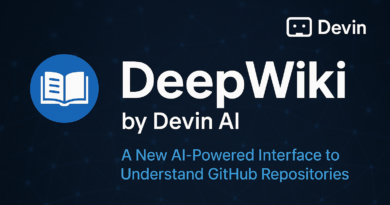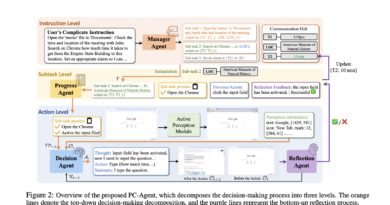Introducing AG-UI: Bridging the Gap Between AI Agents and Front-End Applications
As AI agents evolve to handle increasingly complex tasks, the need for seamless interaction between these agents and front-end applications has become more pressing. While backend AI models have made significant strides, the front-end interaction layer has often lagged behind, relying on fragmented, custom solutions that hinder scalability and efficiency. This gap is precisely what the Agent-User Interaction Protocol (AG-UI) aims to address.
What is AG-UI?
AG-UI (Agent-User Interaction Protocol) is an open, event-based communication protocol designed to connect backend AI agents with front-end applications. It establishes a standardized layer for real-time interaction through structured JSON events, ensuring a consistent and efficient communication channel between AI models and user-facing interfaces.
Key Features of AG-UI
- Event-Driven Architecture: AG-UI uses a lightweight, event-driven approach, leveraging Server-Sent Events (SSE) over HTTP. This architecture supports real-time data flow without the complexity of WebSockets, making it easier to implement and maintain.
- Structured Communication: The protocol defines a clear structure for communication, using JSON-formatted events that are both human-readable and machine-parsable. Each event contains a predefined type and payload, ensuring consistency across different implementations.
- Live Token Streaming: AG-UI supports live token streaming, which is essential for real-time AI interactions where users expect instant feedback as the model generates responses.
- Tool Usage Tracking: The protocol allows agents to send progress updates, error messages, and lifecycle events, providing developers with full visibility into the agent’s behavior.
- State Management: AG-UI includes mechanisms for tracking and updating shared states, reducing the need to resend entire data objects, which can significantly improve performance in complex applications.
- Multi-Agent Coordination: It supports multi-agent handoffs, allowing seamless collaboration between multiple agents within a single session, making it ideal for complex workflows involving specialized agents.
Why AG-UI is a Game Changer
The current landscape for AI-to-UI communication is fragmented. Developers often resort to makeshift solutions like custom WebSockets, JSON hacks, or prompt engineering tricks to bridge the gap between backend logic and front-end interfaces. This lack of standardization leads to several challenges:
- Inconsistent User Experiences – Different implementations can result in varying response times, incomplete interactions, or broken user journeys.
- Increased Development Overhead – Without a common protocol, front-end developers must write custom adapters for each AI model, slowing down development cycles.
- Scalability Issues – As agent capabilities grow, these bespoke solutions become harder to scale, debug, and maintain.
- Security and Compliance Challenges – Managing data flow securely across multiple systems without a standardized approach can introduce significant risks.
AG-UI addresses these pain points by providing a unified framework that simplifies agent-to-user interactions. It reduces complexity, improves scalability, and enhances security by enforcing standardized communication patterns.
How AG-UI Works
1. Event-Based Communication
AG-UI uses a straightforward, event-driven model where the front end sends a single POST request to an agent endpoint, and then listens to a real-time stream of structured events. These events can include:
- TEXT_MESSAGE_CONTENT – Standard text outputs from the AI.
- TOOL_CALL_START – Notifications when an agent invokes a tool.
- STATE_DELTA – Updates on shared state changes.
- ERROR – Alerts for errors or exceptions.
2. Lightweight Architecture
AG-UI relies on standard HTTP and SSE, avoiding the overhead of full-duplex WebSocket connections. This design choice makes it a lightweight, easy-to-implement solution that works across a wide range of devices and network conditions.
3. Flexible Integration
The protocol supports multiple backend platforms, including OpenAI, Ollama, LangGraph, and custom AI agents. It also provides SDKs for popular frontend frameworks like React and TypeScript, simplifying integration.
Practical Use Cases
AG-UI is well-suited for a variety of AI-driven applications, including:
- Real-Time Collaboration Tools – AI copilots that assist in code writing, design, or document editing.
- Customer Support Systems – Interactive chatbots that handle user queries with dynamic responses.
- Gaming and Simulation – AI characters that respond to player actions in real time.
- Data Visualization Dashboards – AI agents that provide contextual insights based on live data streams.
Getting Started with AG-UI
To use AG-UI, developers need to:
- Install the SDK
Use the available SDKs for TypeScript or Python to quickly add AG-UI support to your project. - Set Up Event Listeners
Configure your front-end application to listen for AG-UI events, including token streams, tool calls, and state updates. - Implement Agent Endpoints
Ensure your backend agents are configured to emit structured events in the AG-UI format.
AG-UI Compatible Agent Frameworks
| Framework | Status | AG-UI Resources |
|---|---|---|
| LangGraph | ✅ Supported | ➡️ Live Demo / Getting Started Docs |
| Mastra | ✅ Supported | ➡️ Live Demo / Getting Started Docs |
| CrewAI | ✅ Supported | ➡️ Live Demo / Getting Started Docs |
| AG2 | ✅ Supported | ➡️ Live Demo / Getting Started Docs |
| Agno | 🛠️ In Progress | – |
| OpenAI Agent SDK | 💡 Open to Contributions | – |
| Google ADK | 💡 Open to Contributions | – |
| Vercel AI SDK | 💡 Open to Contributions | – |
| AWS Bedrock Agents | 💡 Open to Contributions | – |
| Cloudflare Agents | 💡 Open to Contributions | – |
Future of AG-UI
As AI agents become more capable and their applications expand, the demand for standardized, real-time communication protocols like AG-UI will only grow. By bridging the gap between backend intelligence and front-end interfaces, AG-UI is poised to become a foundational component in the next generation of AI-powered applications.
Whether you’re building a personal coding assistant, a customer support agent, or a real-time collaboration tool, AG-UI offers the flexibility, scalability, and simplicity needed to bring your AI-powered ideas to life.
Check out the GitHub Repository of AG-UI. Play with the hello-world app here: https://agui-demo.vercel.app/
Also, don’t forget to check out AI Toolhouse AI Agents Directory for the latest AI Agents.




